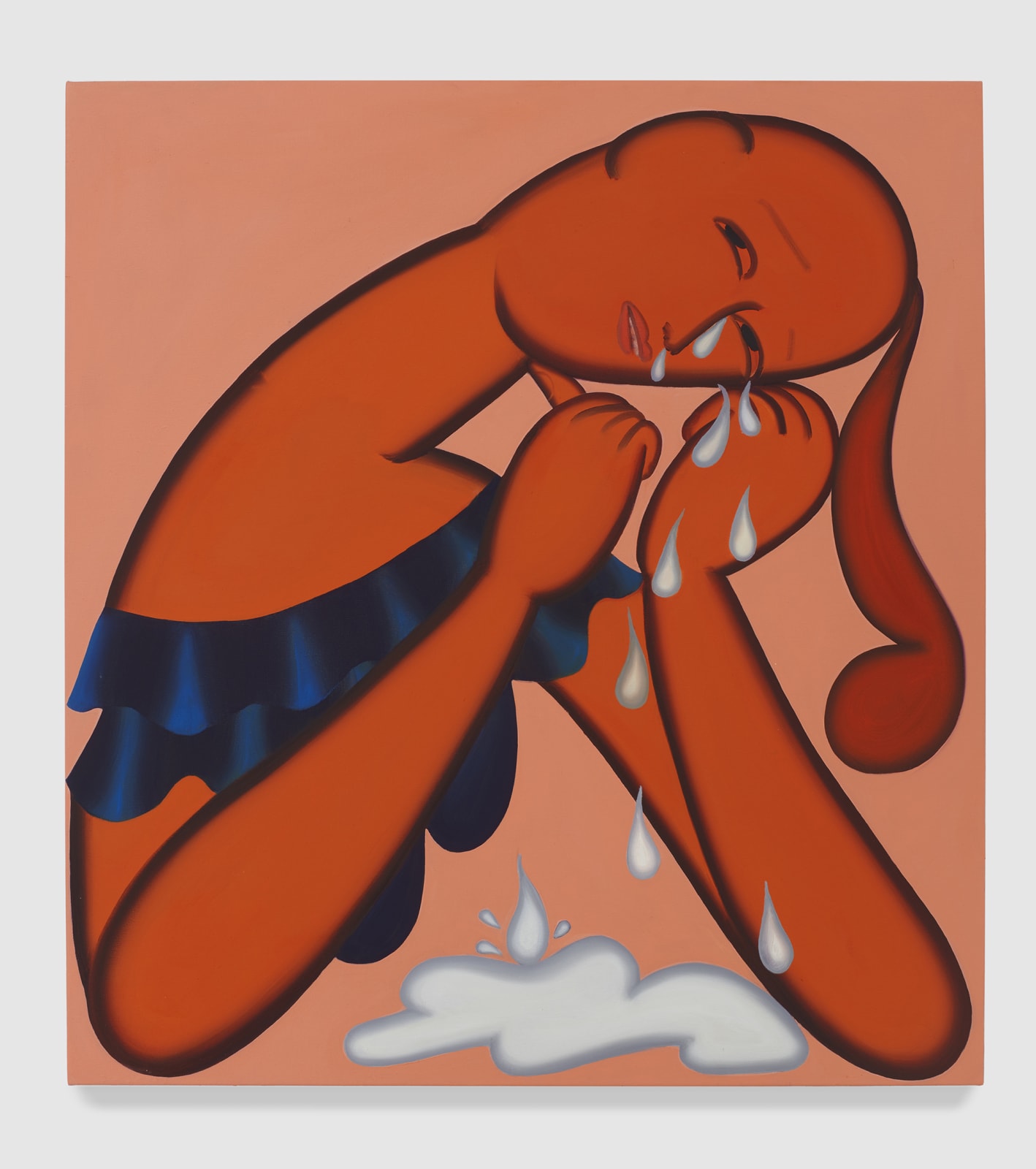-
Artworks







Crying (II, Downwards), 2020
Oil on canvas45 x 41 in
114.3 x 104.1 cmSoldFurther images
Drawing from ideas of up and down, or forward and backward, Weaver manipulates spatial binaries in her work—either complying with their connotations, or distorting them with plays on perspective. The...Drawing from ideas of up and down, or forward and backward, Weaver manipulates spatial binaries in her work—either complying with their connotations, or distorting them with plays on perspective. The heavy, directional tears within two paintings entitled Crying (I, Upwards) and Crying (II, Downwards) convey divergent subtexts of sadness: one figure is energetically performative, while the other, according to Weaver, might be performing “what she thinks is sympathetic in a drippy lugubrious way.” For Weaver, the works both reference Picasso’s crying women, but “from a position less of cruel voyeurism than of embodiment and empathy.” The works were also influenced by a quote about Andre Butzer's Friedens-Siemens paintings from 2000-2001: "This is a peaceful existence, out of whose worldy-wise, sober-minded experience Butzer also recognizes that 'sad eyes" can also be 'happy eyes,' that 'crying tears... is the ability to sail through life against a contrary wind'.'" (1) For all of their emoting, these two figures are not helpless—crying does not betray a lack of control, but rather, a deliberate and controlled assertion of self.
(1) "Being and Image: Andre Butzer: 1994-2014" by Christian Malycha (pg 94)Exhibitions
Grace Weaver: STEPS, James Cohan, New York, NY, July 15 - September 12, 20202of 2













